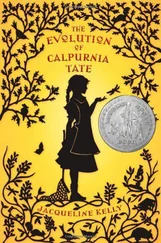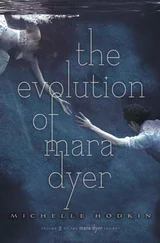There were several other humans present besides Lydia Littlemore and Norman Plumlee who were introduced to me in turn. Andrea was a young woman with a buoyant mop of flame-red hair, her nose the epicenter of an explosion of rusty freckles. Prasad was a small and middle-aged dark-skinned bald man with glasses. Jake was a lean and energetic young man with pallid skin and sandy hair. I was passed from one pair of arms to another, from one body to the next. All of them held me and played with me and spoke to me, but I was wiggly and impatient in the arms of anyone but Lydia.
People said things I failed to understand. Information was communicated — things were said that produced thoughtful expressions, things were said that produced ripples of laughter — but I didn’t get any of the jokes; it was all glossolalia to me. My understanding of language was so inchoate that the only words I managed to pick out of their fog of babble were my own name and Lydia’s. I don’t believe anyone began any serious attempts to instruct me on that first day in the lab. I wasn’t yet sure whether I would stay here or if I would be immediately returned to my family and the only home I had ever known in the Primate House of the Lincoln Park Zoo.
In any event my memory from this period is jumbled. I can’t recall what happened in exactly what order. I know that in a certain corner of the room there lay, as I mentioned earlier, a big blue squishy mat, of a slightly sticky texture, which I presume had been so placed on the cold hard floor in order to provide me with a pleasant place to sit, and on this mat lay an assortment of toys. I will catalog, as I remember them, Bruno’s first toys.
I remember a device consisting of two wooden stands connected by a series of parallel metal rods, each arranged equidistantly from the next in a lateral row, with brightly colored beads strung along the rods that could be pushed in either direction. This I would later learn was called an abacus. I remember a large soft ball made of red rubber that could easily be squeezed, rolled, thrown, or bounced. I remember a device shaped like a giant bowling pin, painted to resemble an animate being. The being wore a blue suit and a horror-stricken expression — a gaping mouth and eyes stretched wide in fear — and seemed to be holding a piece of paper in front of his torso, on which was a clumsy drawing — which the being himself had presumably drawn — of a crude blue circle encircling a red dot, making a target. One could effortlessly push the being over, but he would always spring back up, recalcitrant, returning at once to an upright position. I remember a complex device made of brilliant green plastic: it was shaped roughly like a cloverleaf, with four prongs sticking out of a central hub, which featured several rows of tiny holes that made strange noises when the device was being operated; at the end of each of the four prongs was a larger hole. This device came with a hammer made of brown plastic, designed to mimic the look — but not the feeling — of a mallet fashioned of coarsely grained wood. During play, a brown plastic creature would emerge from one of the four holes. The creature looked like a brown lump and had eyes and a nose and a mouth from which two white square teeth exuded, and it wore a little red mining helmet with a headlamp on the front. When one smote the creature with the faux-wooden plastic hammer, it would vanish into the bowels of the machine, only to be replaced immediately by another creature, similar but not identical, from another hole. Each of the brown lump-creatures had a distinct personality: one was clearly a “nerd,” with glasses and a timid expression; one was female, with lipstick and long eyelashes; and one was a mentally deficient brown lump who wore his mining helmet backward. You could smite these creatures with the plastic hammer all you pleased, but another would always rise up, Hydra-like, to take the place of the last. The pattern, if there was one, was wildly unpredictable, and this process continued ad infinitum or until the smiter grew weary of smiting. This device I would later learn was called a Whack-a-Mole system, because the brown plastic lumps represented the subterranean animals, moles (hence the mining helmets), and the holes represented mole holes.
These and other such objects lay on the squishy blue mat in the corner of the room. I was encouraged to manipulate them — and manipulate them I did — in a zealous frenzy — in feverish abandon.
But there is also another, chillier memory from that day embedded limpidly in my brain. It surely occurred on that first day; I don’t see how it could have not. The afternoon had passed, the rain had ceased, and I had been out of confinement — relatively speaking — all day, playing, interacting with the humans, exploring the laboratory. And the human beings one by one began to exit the room and not come back. They exchanged words with one another, and as each human left, he or she would make a certain utterance and perform a certain physical sign that I guessed to be a gesture signaling polite departure: to hold up a hand and move it around. Different people performed this sign in different ways, but it was always interpreted as containing more or less the same meaning: “I am about to leave and not return, but do not worry, I am not upset with you.” As each of the humans left they made a variation on this sign, and it was answered in kind by the other humans still remaining in the room. Most signs, I’ve noticed, that any animal makes one can basically group into two archcategories: I mean harm , or I mean no harm.
The first to leave was the lean and energetic young man with sandy-colored hair who had been introduced to me as Jake. He signaled his parting by slinging a rucksack over one shoulder, hooking one thumb under the strap, and using his free hand to gesture: he held out the hand with an open palm and fingers widely spaced, jerked it once to one side and left the hand in this position until the other humans acknowledged it with similar gestures, though some of them would acknowledge it merely by making a certain facial expression that was sometimes — though not always — accompanied with a deft dipping-down-and-then-up of the head, which I later came to know as a “nod,” a common human signal that can mean either an affirmative answer to a binary question or a no-harm sign — its opposite being a side-to-side movement of the head, which is called a “shake.” Vertical — yes — nod; horizontal — no — shake: these were some of the earliest signs I learned. Even though each human made the sign in a different way it was always interpreted identically, which told me that this sign enjoyed a certain marginal plasticity of process that allowed for the insertion of the signer’s personal style. The flame-haired Andrea, for instance, made this sign in a manner that I later came to understand is considered more feminine: by bringing one hand close to her body, and, palm-out, thumb more or less stationary, flapping her four fingers up and down repeatedly while using her face to smile. Prasad, the dark-skinned and bespectacled man, made his egress while gesturing so subtly that his sign was nearly invisible, but his leaving was still perceived as benign. The form of these hand gestures appeared to be so wildly disparate dependent upon the gesturer that the only thing cluing me in to the fact that they essentially all had the same meaning was the fact that each provoked the same interpretation. This gesture was, of course, a “wave.” This too I learned quickly. It is really astonishing how far a communicative arsenal consisting only of a nod, a shake, and a wave can carry you; with these three signs you can say to anyone yes, no, harm, no harm, hello , and good-bye . Add to these the smile, the frown, and the finger point, and you’re practically already in basic-human-social-interaction business.
Читать дальше












